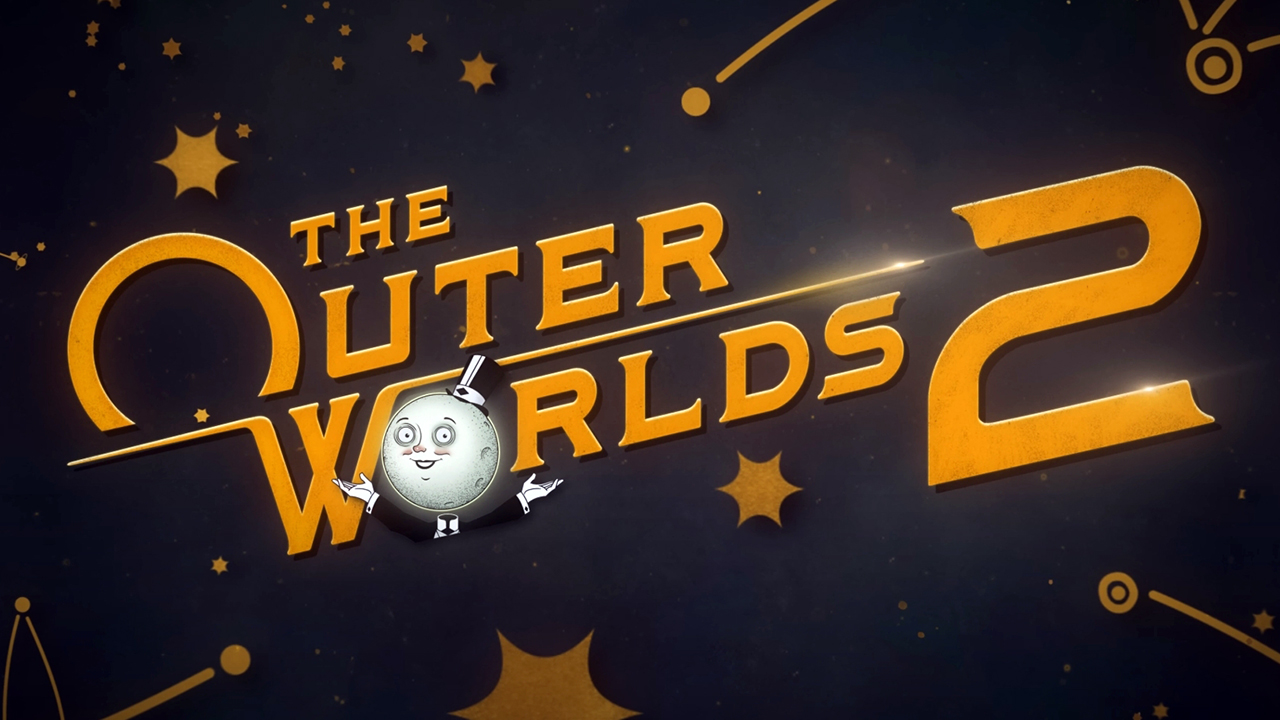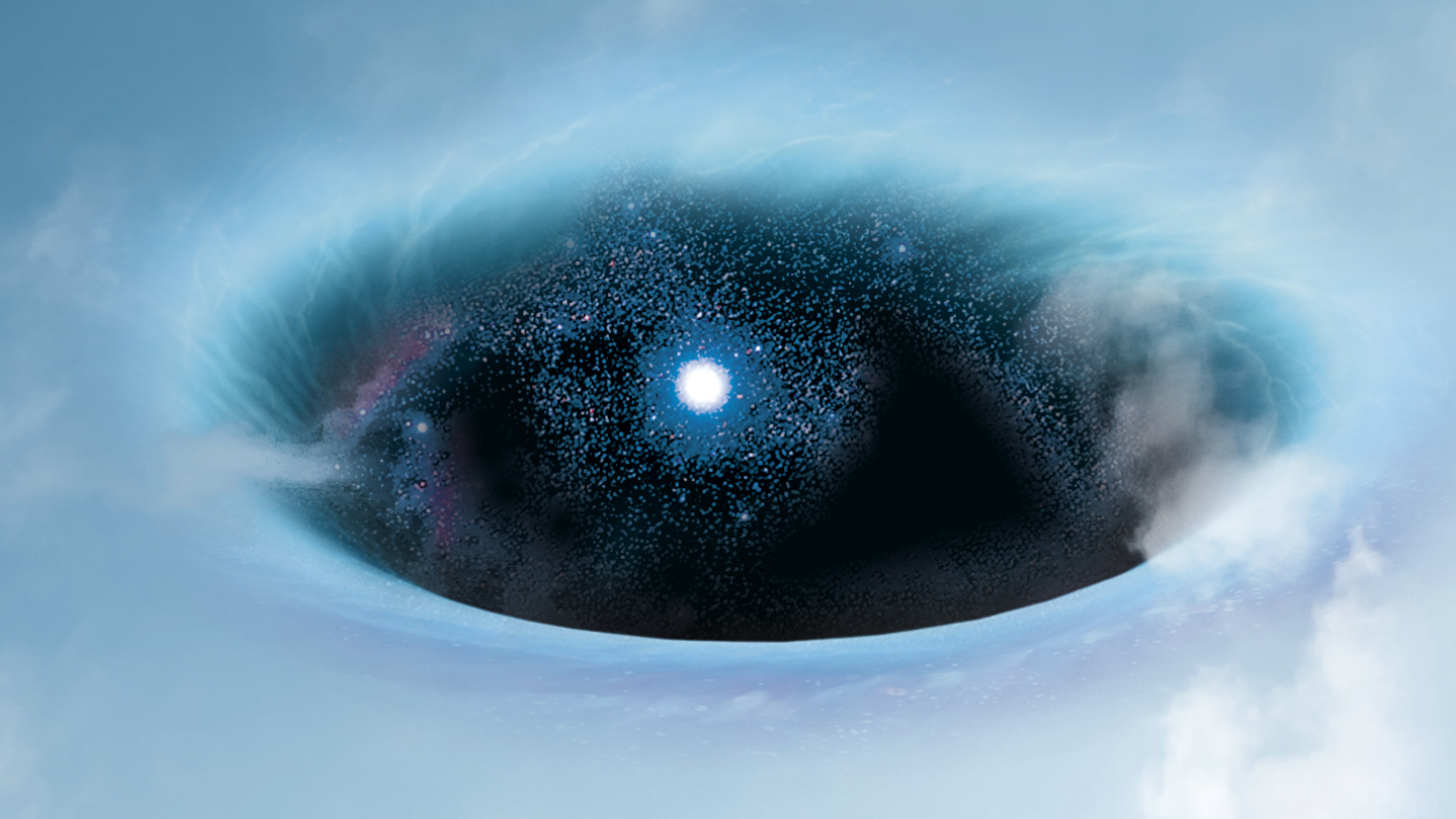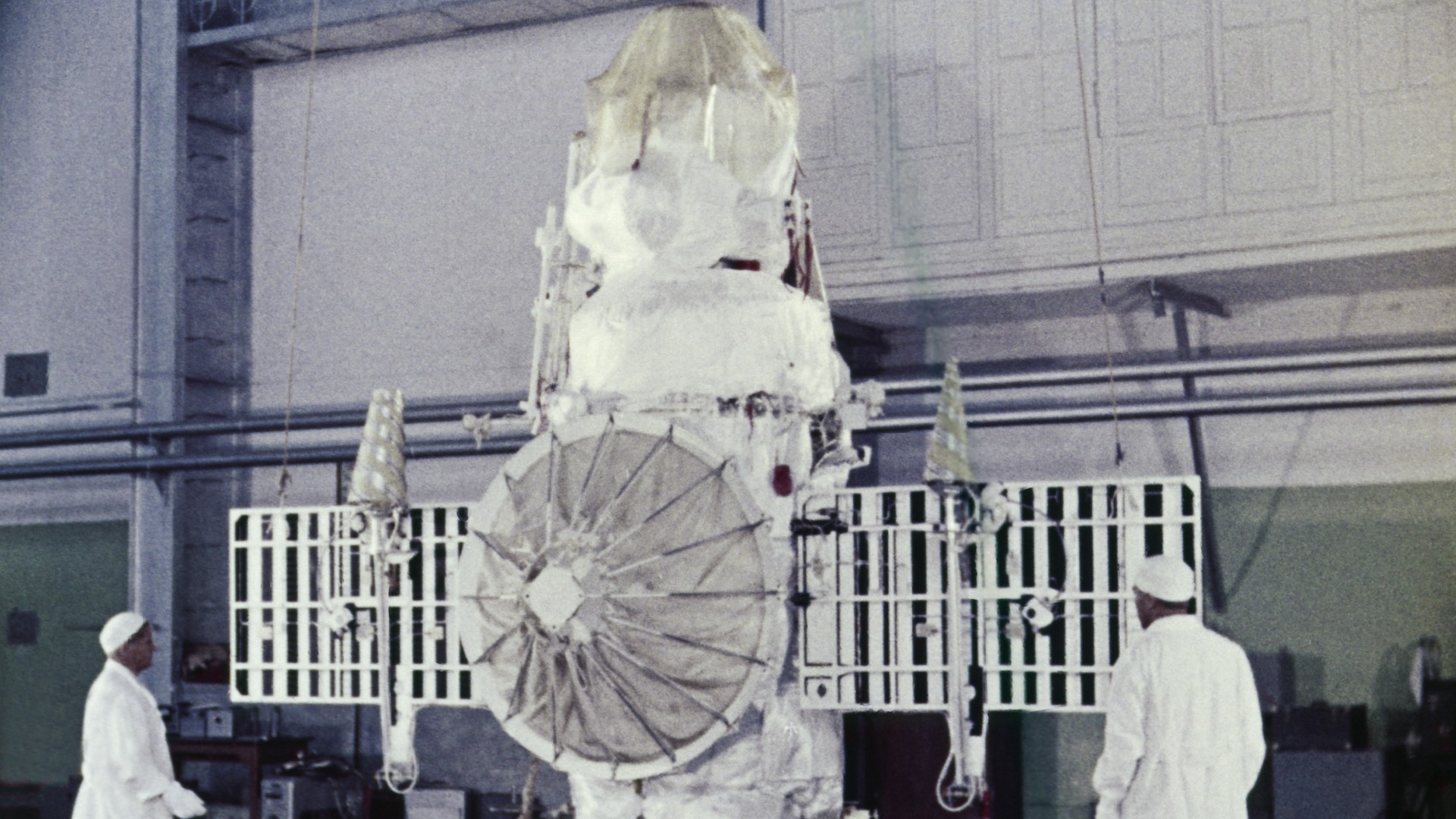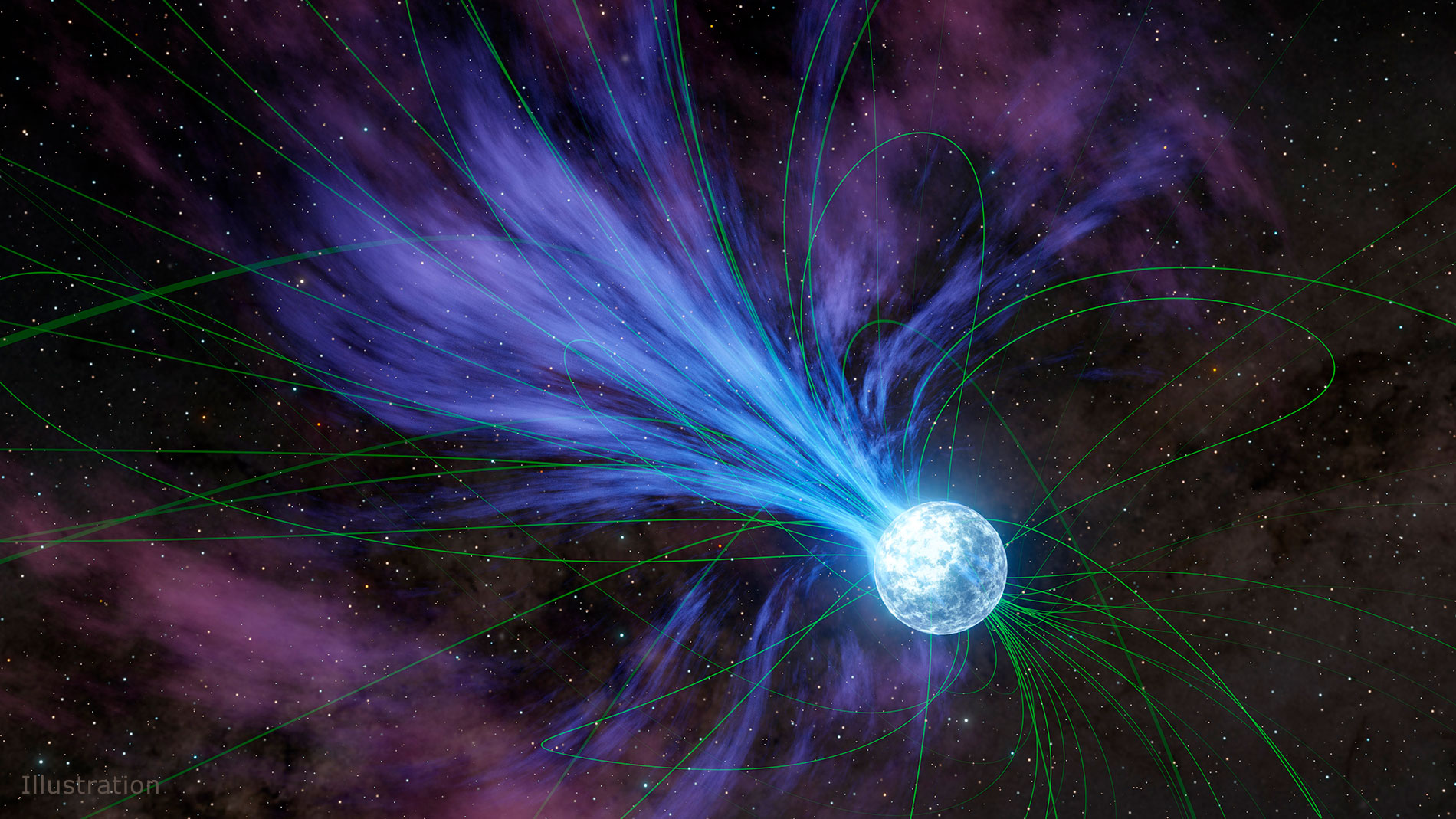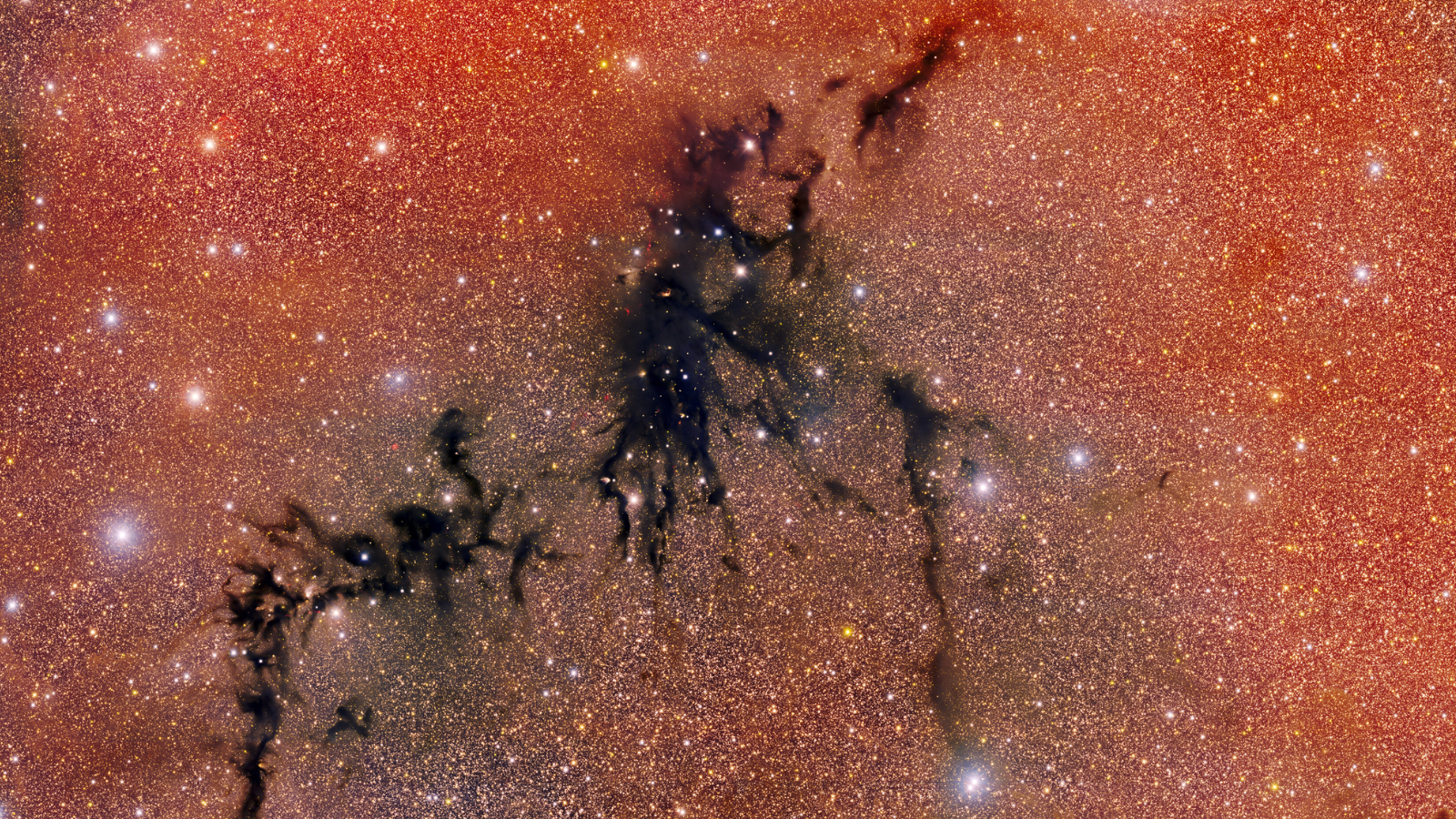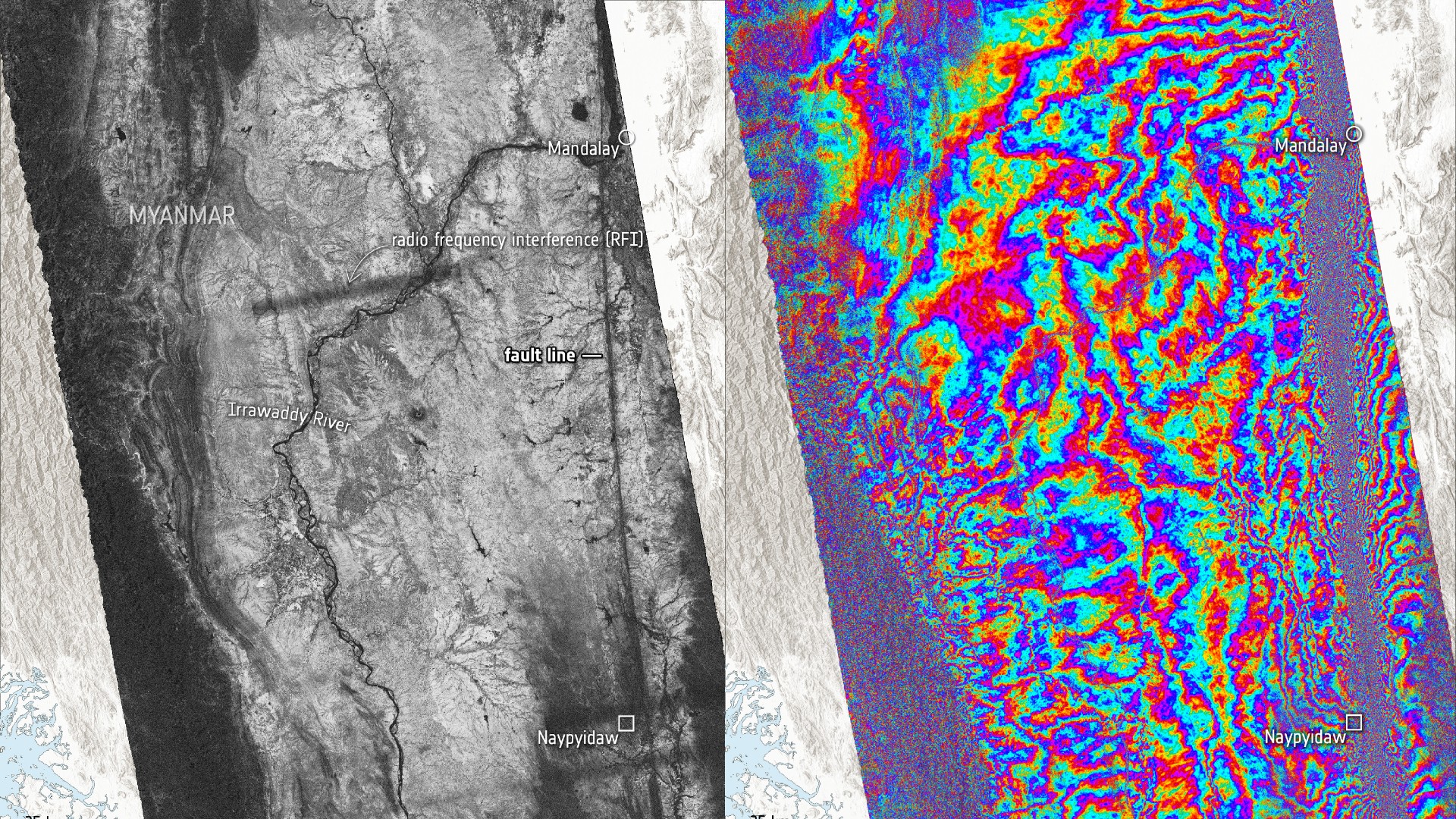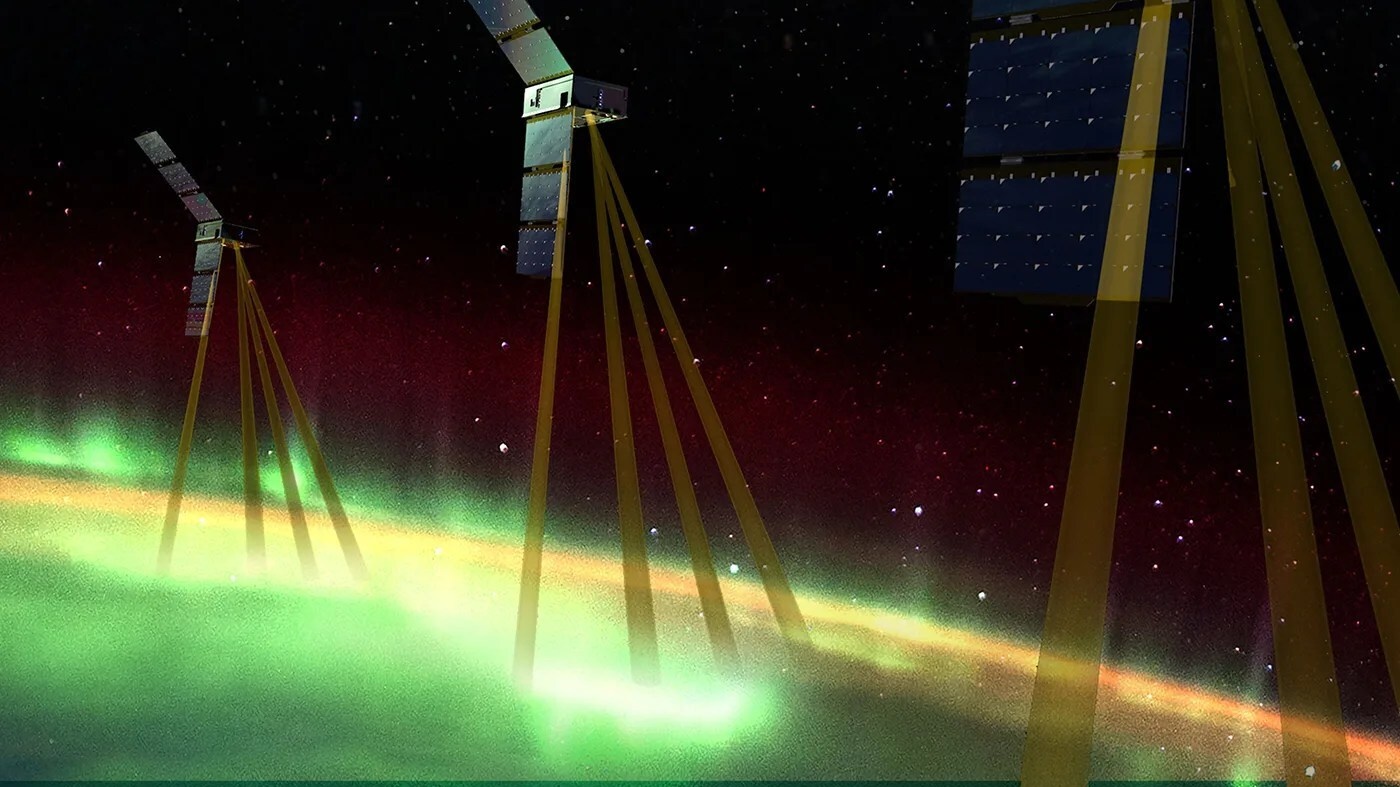NASA's InSight Lands on Mars with Braille 'Easter Egg' Hidden in Sight
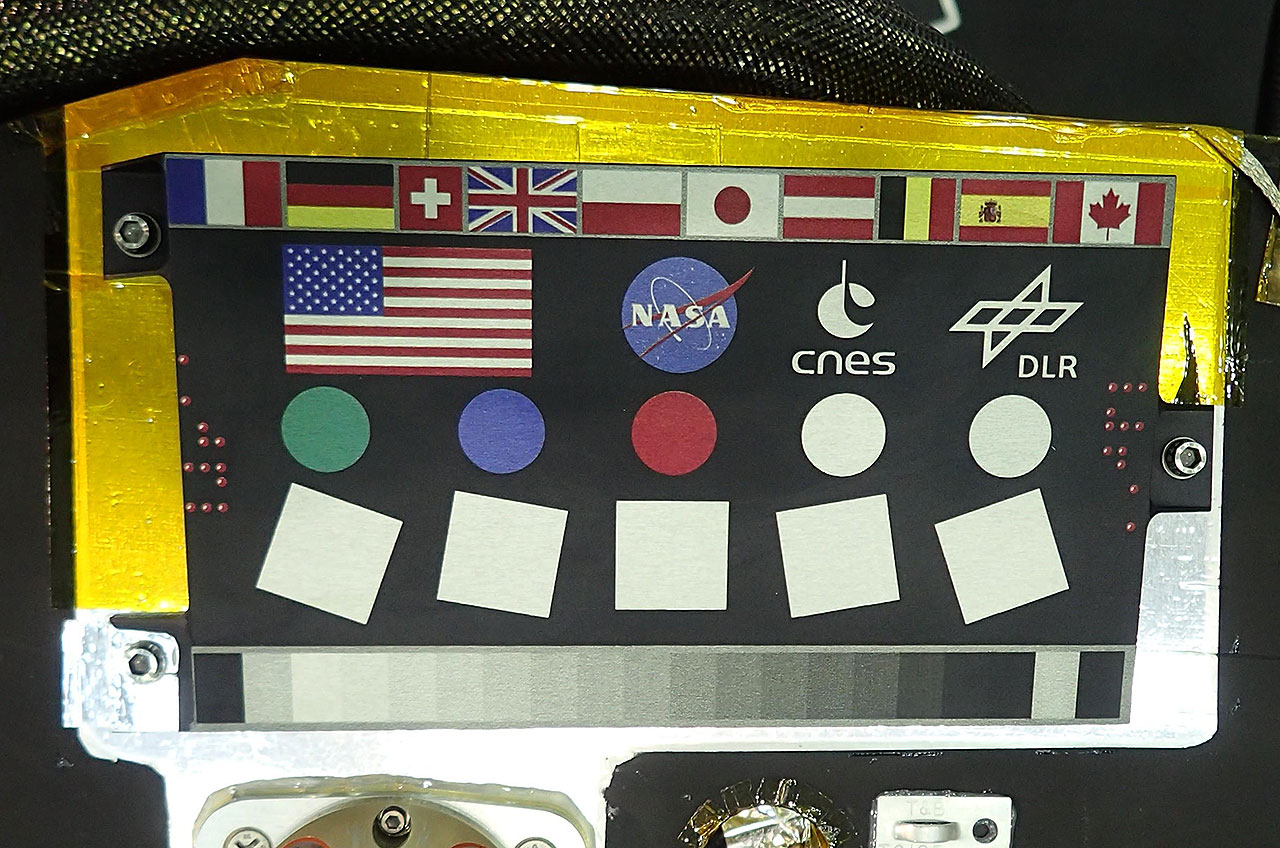
PASADENA, Calif. — NASA's InSight, newly arrived on the surface of Mars, will study what cannot be seen — and includes a nod to those without sight.
The robotic lander, which touched down on the Red Planet on Monday (Nov. 26), is equipped with a seismometer and self-hammering "mole" to probe into the deep interior of Mars. The data returned from the U.S.-led international mission will help inform scientists on how worlds such as our own were formed.
As with previous NASA landers and rovers, InSight is adorned with the flags and logos of the countries and space agencies involved in its mission (or at least most of them, more on that below). It is also decorated with a look-and-you-might-miss-it pattern of dots that continues a tradition started by the Jet Propulsion Laboratory (JPL) in Pasadena, California. [NASA's InSight Mars Lander: Full Coverage]
"I was thinking what else could we put on there that could be a kind of code that people in the know could look at and figure out?" said Bruce Banerdt, InSight's principal investigator at JPL, in an interview with collectSPACE.com. "I thought, 'What about braille?'"
Target in sight
InSight's braille "code" can be found on its camera calibration target.
To take precise measurements, InSight will use its robotic arm to deploy its two primary science instruments directly on the surface of Mars. Before it can do so though, it will use a camera mounted on the arm to produce a digital terrain map of its immediate surroundings. Mission managers will then use the imagery to select the best places to deposit the hardware.
"The arm takes a picture and then moves and takes another picture and we create a stereo pair. We then process that to create three-dimensional terrain maps," said imaging scientist Justin Maki, of JPL.
Get the Space.com Newsletter
Breaking space news, the latest updates on rocket launches, skywatching events and more!
First though, Maki and his team must verify that the camera can produce accurate images after being subjected to the rigors of launch, the nearly seven-month cruise from Earth to Mars and the landing. To do that, InSight is equipped with a calibration target.
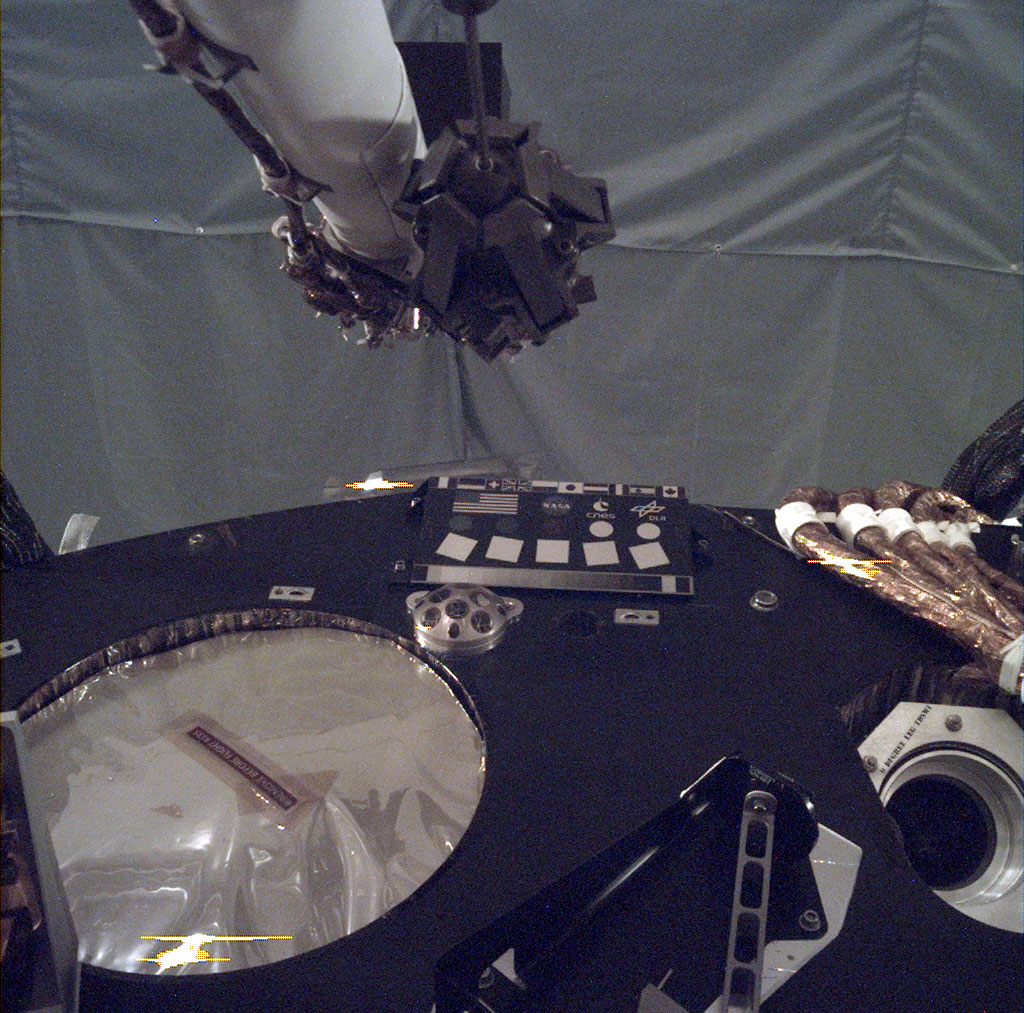
Mounted at the rear of InSight's deck is a 7-by-4-inch (17-by-10-centimeter) plate that serves as both the camera's target and the mission's symbolic marker. The lower half of the plate has colored circles, tilted squares (referred to as "slanted edges") and a grayscale gradient scale that will be used to confirm and calibrate the camera's sharpness, contrast and geometry.
"We verify the camera is taking in focus pictures and then we verify the geometry is good to go. Then, at that point, we've checked it out and we can use that to help validate the digital terrain maps," Maki told collectSPACE.
At the top of the calibration target plate, above the circles, are the logos of NASA, CNES (the Centre National d'Études Spatiales, France's national space agency, which provided InSight's seismometer) and DLR (the German Aerospace Center, which built the mission's burrowing heat flow probe). Also displayed are the flags of the United States (twice the size of the others), France, Germany, Switzerland, United Kingdom, Poland, Japan, Austria, Belgium, Spain and Canada.
Italy, which contributed a small laser retroreflector mounted next to the calibration target on InSight's deck, joined the mission after the plate was installed and so its flag is missing from the lander. [NASA's InSight Mars Lander: Amazing Landing Day Photos!]
Custom code
The target plate, which was made by JPL engineer Jesse Grimes-York, has one more feature: on either side of the flags, logos and calibration tools, are a set of red dots.
"J-P-L" is spelled out in braille, the tactile writing system that is used by the blind and visually impaired.
"JPL has a tradition of trying to put some type of 'easter egg' on its missions," said Banerdt. "One of the rovers [Curiosity] has morse code encoded into the wheels so as it goes through the Martian soil, it leaves behind imprints of 'J-P-L' in code."
"Braille is another kind of a code, an international code that anybody, anywhere in the world could try to interpret. So we tried putting it on there and it looked cool, so we did it," Banerdt told collectSPACE.
The first photographs of the calibration target are expected on Earth within the first week of the mission, pending other engineering checkouts proceeding as planned.
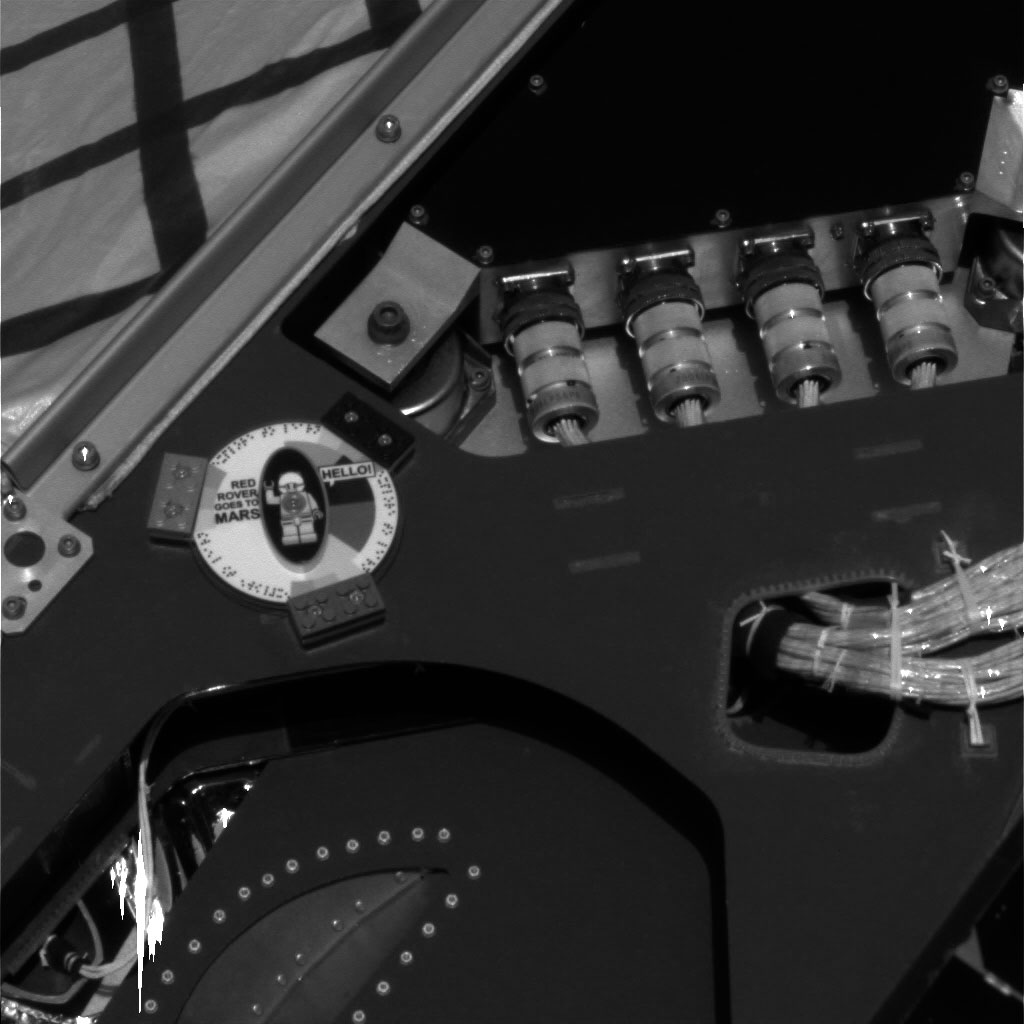
InSight is the second mission to land braille on Mars. On Jan. 25, 2004, NASA's Mars Exploration Rover Opportunity touched down with a mini-DVD decorated in part with a secret message in braille. The disc, which also featured the image of a LEGO astronaut minifigure, was part of a public outreach program organized by The Planetary Society.
"Explore to learn," read the message in braille, as was revealed after photos of the DVD were sent back to Earth.
Follow collectSPACE.com on Facebook and on Twitter at @collectSPACE. Copyright 2018 collectSPACE.com. All rights reserved.
Join our Space Forums to keep talking space on the latest missions, night sky and more! And if you have a news tip, correction or comment, let us know at: community@space.com.

Robert Pearlman is a space historian, journalist and the founder and editor of collectSPACE.com, a daily news publication and community devoted to space history with a particular focus on how and where space exploration intersects with pop culture. Pearlman is also a contributing writer for Space.com and co-author of "Space Stations: The Art, Science, and Reality of Working in Space” published by Smithsonian Books in 2018.In 2009, he was inducted into the U.S. Space Camp Hall of Fame in Huntsville, Alabama. In 2021, he was honored by the American Astronautical Society with the Ordway Award for Sustained Excellence in Spaceflight History. In 2023, the National Space Club Florida Committee recognized Pearlman with the Kolcum News and Communications Award for excellence in telling the space story along the Space Coast and throughout the world.

